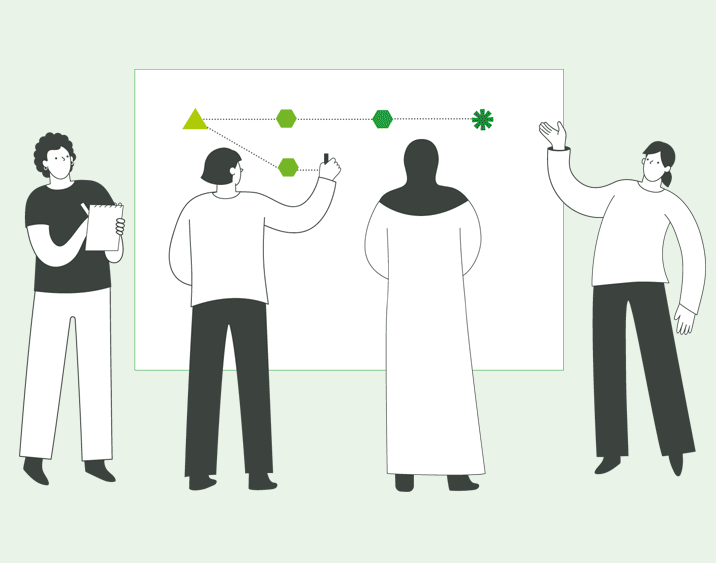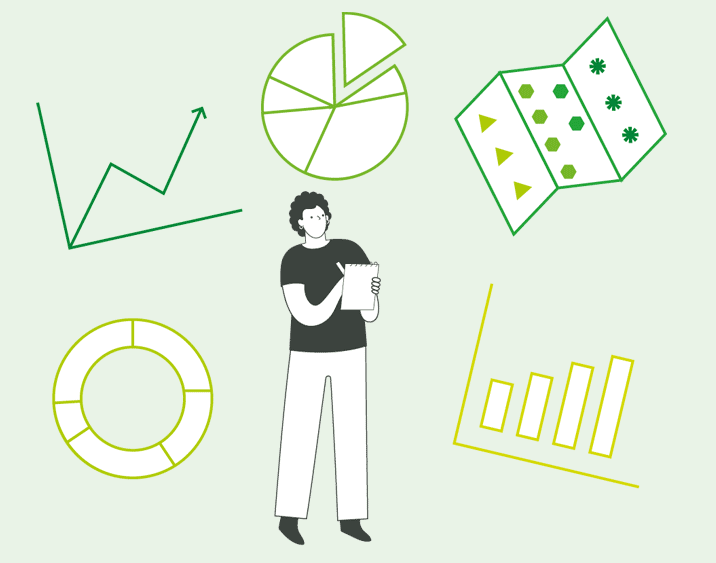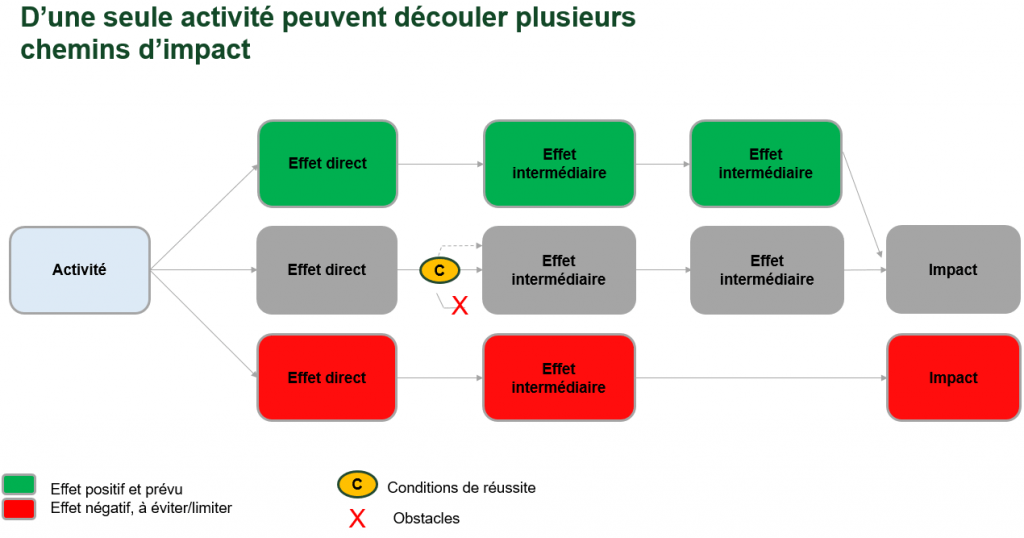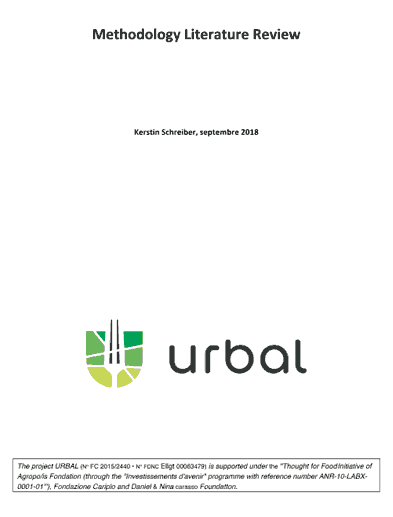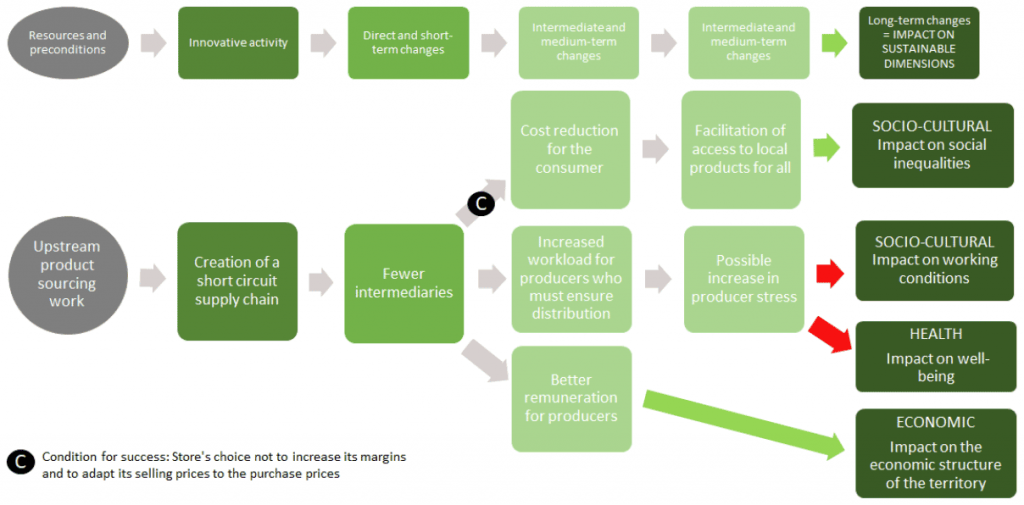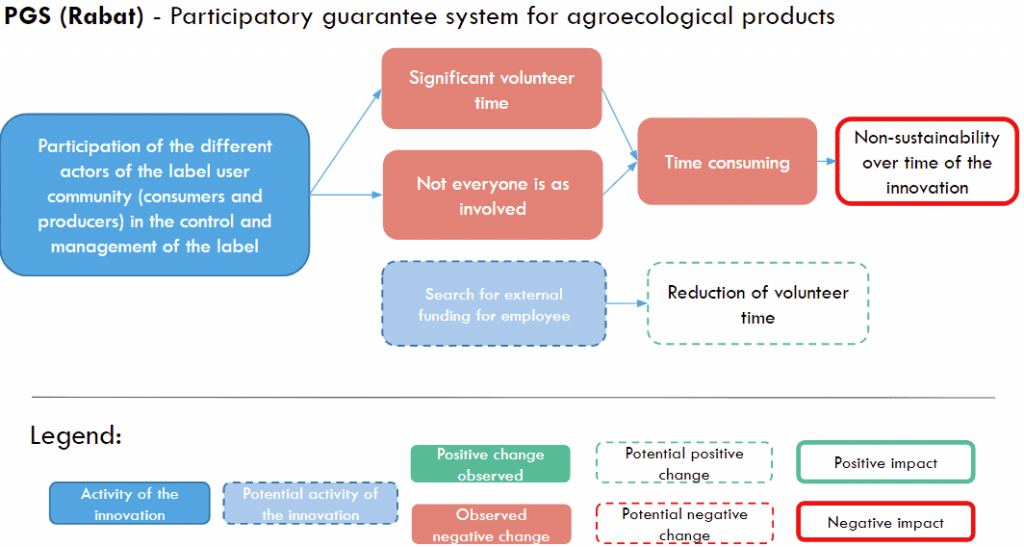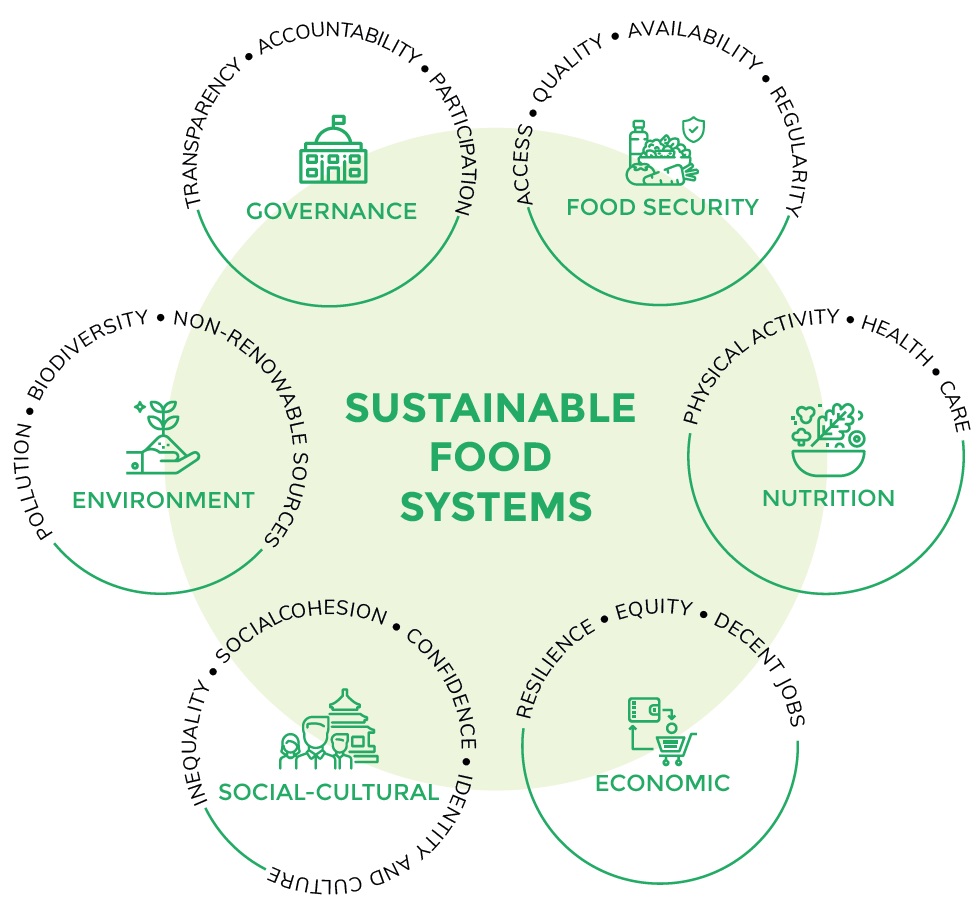L’objectif de la méthodologie Urbal est d’aider à démêler les objectifs, les actions et les stratégies d’une innovation sociale, qui contribuent au changement vers une alimentation durable, pas nécessairement à mesurer son impact. C’est pourquoi Urbal propose de travailler sur la cartographie des chemins d’impact, qui vise à répondre à la question de savoir comment et pourquoi un impact s’est produit au fil du temps.
Une carte des chemins d’impact est un diagramme qui montre comment une activité peut générer des changements directs et indirects, pour aboutir à des changements à long terme, également appelés impacts.
Les activités sont des actions associées à la réalisation des objectifs portés par l’innovation. En d’autres termes, il s’agit de ce qui est réellement fait pour atteindre les objectifs de l’initiative.
Les effets directs ou outputs sont les résultats directs et immédiats d’un projet. Il s’agit généralement de ce que le projet a réalisé à court terme. Les résultats ou outcomes font référence aux conséquences à moyen terme de l’innovation. Ils sont généralement en lien avec les objectifs initiaux de l’innovation. Les impacts sont les conséquences à long terme d’un projet.
Pour comprendre comment votre innovation a pu produire des impacts sur la durabilité, l’approche Urbal vous encourage à vous demander :
- Quels changements depuis le démarrage de notre initiative ?
- Quels changements ont été produits par les différentes activités que vous avez développées pour atteindre vos objectifs ?
Il existe plusieurs chemins pouvant conduire une activité à un impact simple ou multiple sur la durabilité. La cartographie des chemins d’impact aide à démêler les multiples relations de cause à effet qui ont conduit au changement.
Ces chemins ne sont pas nécessairement linéaires : l’interrelation, la convergence, la divergence potentielle entre les divers changements et chemins vers les différentes dimensions de la durabilité, construisent également une théorie systémique du changement. Cela permet de mettre en valeur les boucles de rétroaction positives comme négatives, les changements imprévus et les contradictions entre les chemins – tout ce qui, selon nous, est particulièrement pertinent pour aborder la question complexe des systèmes alimentaires durables.






